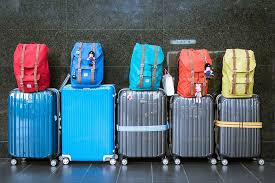When traveling, one of the most common concerns is the cost of baggage. Excess baggage fees can quickly add up, making your trip more expensive than planned. To help you avoid these extra charges, it’s essential to understand the Air Canada Baggage Policy and how it works. Whether you’re flying for business or leisure, this guide will break down everything you need to know about Air Canada Baggage Policy to ensure you’re prepared and can avoid surprises at the airport.
Understanding the Air Canada Baggage Policy
Airlines have different rules when it comes to baggage, and understanding the Air Canada Baggage Policy can make all the difference in avoiding unnecessary costs. The airline offers a range of options depending on the type of flight, the class of service, and your destination. Below, we will dive into the key aspects of the policy, including baggage allowances, fees, and tips for packing smarter.
Baggage Allowances for Different Travelers
The Air Canada Baggage Policy varies depending on the class of service, route, and your frequent flyer status. Here’s a breakdown:
- Economy Class: Typically, Economy passengers are allowed one free carry-on bag and one personal item (like a backpack or purse). For checked baggage, the allowance is usually one bag weighing up to 50 lbs (23 kg). If your checked baggage exceeds the weight or size limits, extra charges will apply.
- Premium Economy Class: Premium Economy passengers enjoy an enhanced baggage allowance. You can carry two checked bags, each weighing up to 50 lbs (23 kg), and the carry-on allowance remains the same as Economy.
- Business Class: Business Class travelers receive a more generous baggage policy. They are allowed two checked bags, each weighing up to 70 lbs (32 kg). Additionally, Business Class passengers can bring one personal item and one carry-on.
Additional Fees for Extra Baggage
While understanding your free baggage allowance is important, it’s just as crucial to be aware of the additional fees that come with excess baggage. The Air Canada Baggage Policy outlines fees for items that exceed the standard weight or size limit. Here’s a breakdown of the common fees you might encounter:
- Overweight Bags: If your checked bag exceeds the 50 lbs (23 kg) limit for Economy or Premium Economy, you’ll be charged an overweight baggage fee. The fees for overweight bags range from $100 to $200 USD, depending on the route and weight of the bag.
- Oversized Bags: Bags that exceed the standard size limits (62 inches/158 cm for the total length, width, and height) are considered oversized. The additional charge for oversized bags can range from $100 to $200 USD, depending on your flight.
- Excess Bags: If you need to check more bags than your class of service allows, you’ll be charged a fee for each extra bag. The cost for additional bags varies depending on your destination but generally falls between $50 and $200 USD per bag.
Special Items and Equipment
If you’re traveling with special items, like sports equipment, musical instruments, or fragile items, it’s important to know how they are handled under the Air Canada Baggage Policy. Special items typically don’t count toward your standard baggage allowance, and there may be additional charges based on the item’s size and weight.
For example:
- Sports Equipment: Air Canada allows you to check in a variety of sports equipment, such as skis, golf clubs, and bicycles. However, additional fees may apply depending on the item’s size and weight. Ensure that you pack them securely to avoid damage during transit.
- Musical Instruments: If you’re traveling with a musical instrument, you may need to make special arrangements to ensure that it fits within the airline’s carry-on or checked baggage requirements. In some cases, Air Canada may allow musical instruments as part of your carry-on allowance, but you should confirm this in advance to avoid any issues at the airport.
How to Avoid Extra Charges with Air Canada
To make sure you don’t run into unexpected baggage fees, here are a few tips to help you prepare for your trip:
- Know Your Baggage Allowance: Before you book your flight, review the Air Canada Baggage Policy to understand your baggage allowance based on your class of service. Knowing your limits will help you avoid surprises.
- Weigh Your Bags Before the Airport: Weighing your luggage before heading to the airport can help you avoid overweight baggage fees. Use a luggage scale to ensure your bags are within the weight limit.
- Use the Right Luggage: Make sure your luggage fits within the size guidelines to avoid oversized baggage fees. Packing efficiently can help you stay within the limits and reduce the chance of paying extra fees.
- Pack Light and Smart: If possible, pack only what you need to avoid checking in additional bags. This will not only save you money but also make your travel experience smoother.
- Check for Exceptions: If you’re traveling with special items, confirm with Air Canada Baggage Policy in advance about the best way to transport them. This ensures you don’t run into issues when it’s time to board.
- Pre-Purchase Additional Baggage Allowance: If you anticipate needing more bags or heavier luggage, pre-purchase additional baggage allowances during your booking process. Doing so in advance is often cheaper than paying at the airport.
- Use Frequent Flyer Benefits: If you are a frequent flyer with Air Canada, check your status to see if you are eligible for increased baggage allowances. For example, elite members of Air Canada’s frequent flyer program may have a higher baggage allowance without additional charges.
Tips for Carrying-On Baggage
While checked baggage is the most common type of luggage, carrying on smaller bags is also a popular choice for many travelers. The Air Canada Baggage Policy allows passengers to bring a carry-on bag and a personal item onboard. To make sure you don’t face any issues with your carry-on, follow these guidelines:
- Check the Size Limits: Your carry-on bag must fit within the standard size requirements (usually around 22 x 14 x 9 inches or 55 x 35 x 23 cm). Make sure it fits in the overhead compartment or under the seat in front of you.
- Liquids and Gels: Follow the TSA guidelines for carrying liquids and gels in your carry-on. Typically, you can bring liquids in containers of 3.4 oz (100 ml) or less, placed in a quart-sized clear bag.
- Avoid Overstuffing: Be mindful of the weight and size of your carry-on bag. Overstuffed bags are more likely to be flagged during the boarding process.
Conclusion
The Air Canada Baggage Policy is designed to help you travel with ease, but it’s essential to understand the rules and restrictions to avoid extra charges. By knowing your baggage allowance, packing efficiently, and following the airline’s guidelines, you can ensure that your travel experience remains smooth and stress-free. Whether you’re flying for business or leisure, being prepared and informed about the Air Canada Baggage Policy will save you money and ensure that you enjoy your trip to the fullest. Safe travels, and remember that Flightaura is here to help you with any of your travel needs.









